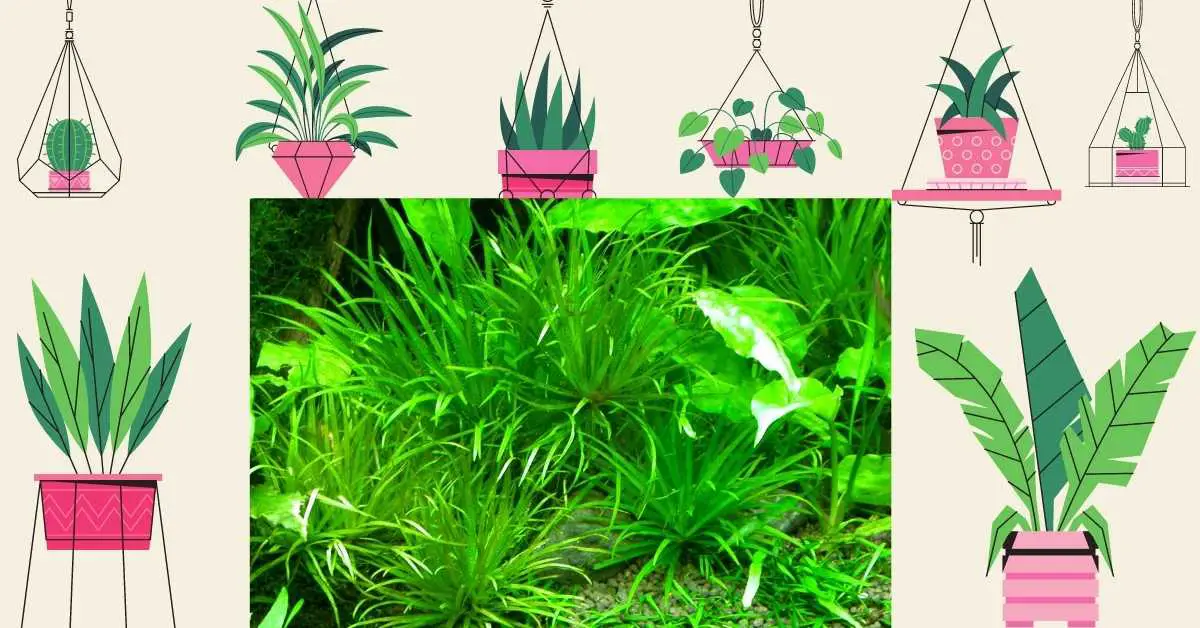Blyxa aubertii is a very hardy and popular aquarium plant. Most of the aquarists love this attractive plant due to its greenish coloration. It is a beautiful, green plant which provides a wonderful addition to the aquarium. It looks good against the background of driftwood and other rough decorations of the aquarium. You can place it in any part of the aquarium. To make your aquarium more attractive, it should be placed in the middle zone of the aquarium.
Distribution and Habitat
In nature, it is distributed in Southeast Asia, Africa, Japan and Australia. Generally, it grows in rice paddies, marshes, smaller lakes and streams with slow-flowing water. Currently, it is found only in specialized pet shops or online vendor with sensible cost.
Quick Blyxa Aubertii Facts
- Scientific name: Blyxa aubertii;
- Common Name: Bamboo plant;
- Family: Hydrocharitaceae;
- Origin: Asia and Australia;
- Water pH: 6.0 – 7.0;
- Water temperature: 23 – 28 °C (73.4 – 82.4°F);
- Water hardness: 5 – 6 ° dGH;
- Propagation: By Cuttings;
- Lighting need: Bright (0.3 – 0.4 W / l);
- Recommended substrate: Fine gravel;
- Ideal placement in a fish tank: Middle;
- Leaves structure: Up to 45 cm in length with a width of 1.8 cm;
- Maximum size: 40 – 50 cm;
- Growth rate: Normal;
Overview
It has long, narrow leaves of dark green color with a brown tinge. Under suitable aquarium condition, it reaches a height of 40 – 50 cm. The plant is suitable for keeping in a large aquarium where it should be placed it in the middle or background position. In the aquarium, it grows throughout the year if proper care is taken. In ideal conditions, it produces numerous small white flowers at the top of modified leaves.
Housing and Care
For optimum growth, the plant needs a tropical aquarium with a water temperature of at least 24 °C. The total hardness of the water should not exceed 5 – 6 ° dGH. The plant degrades very quickly and dies in more severe water. The pH of the water should be close to neutral or slightly acidic (6.0-7.0). The water should be clean and 20 -25% water should be changed regularly to keep the aquarium environment healthy.
For the proper maintenance of the plant, a relatively large volume aquarium is required and planting is necessary for the middle or background position of the aquarium. If the plant is planted in the central part of the aquarium, it looks like as an ornament.
Lighting should be strong enough and scattered. When there is a lack of light, the leaves lose their beautiful brownish color and become pale in color. In this case, immediately it is necessary to take measures to correct this situation, otherwise, the plant may die. You can also use artificial and natural light. As artificial light, it is possible to use fluorescent lamps and incandescent lamps. The power of fluorescent lamps should be 0.3 – 0.4 watts per 1 liter of the aquarium, and the power of incandescent lamps should be three times strong than fluorescent lamps. The duration of the day is not less than 12 hours.
The nature of the substrate does not play a significant role, but it is advisable to use small pebbles or coarse sand. The soil should be nutritious consisting of a mixture of sand and clay. Moreover, the content of clay contributes to a faster growth of the plant. But in large soil particles, the root system of the plant develops poorly. The layer of the soil should be at least 5.0-7.0 cm thick. Usually, this plant does not need mineral fertilizer, because it can receive the necessary nutrients from the silted soil. For maintaining proper growth of your aquarium plants, you should also know about aquarium plant diseases and their control measures.
The aquarium needs proper filtration to keep water clean because a small amount of organic turbidity in the water leads to a significant slowdown in plant growth. Some herbivorous fish prefer to eat young shoot so it should not be populated with such fish in an aquarium with this plant.
Propagation
In aquarium condition, it can propagate if appropriate care is taken. Propagation is done by the formation of daughter plants. If the plant bush is well developed, you can also propagate using a rhizome. In this case, you should cut the rhizome into several parts (2-3 parts) using sharp scissor or knife. Under the suitable condition, each separated part will finally become a new plant within few days. To cut the rhizome, you can get help from only experienced aquarists, otherwise, the plant become sick for a long time and may die. To prevent the death of parts of the rhizome, they should be treated with a solution of heteroauxin or other stimulants. This plant also does sexual reproduction by seeds formation. This type of method is considered more effective.
Also read: Marsilea Minuta Care Facts
Final Words
Overall, Blyxa aubertii is a beautiful and gorgeous aquarium plant which provides a wonderful addition to your aquarium. It looks good against the background of driftwood and other rough decorations of the aquarium. To create your aquarium natural with a safe home for your fish, we recommend you to keep this plant in your aquarium.

